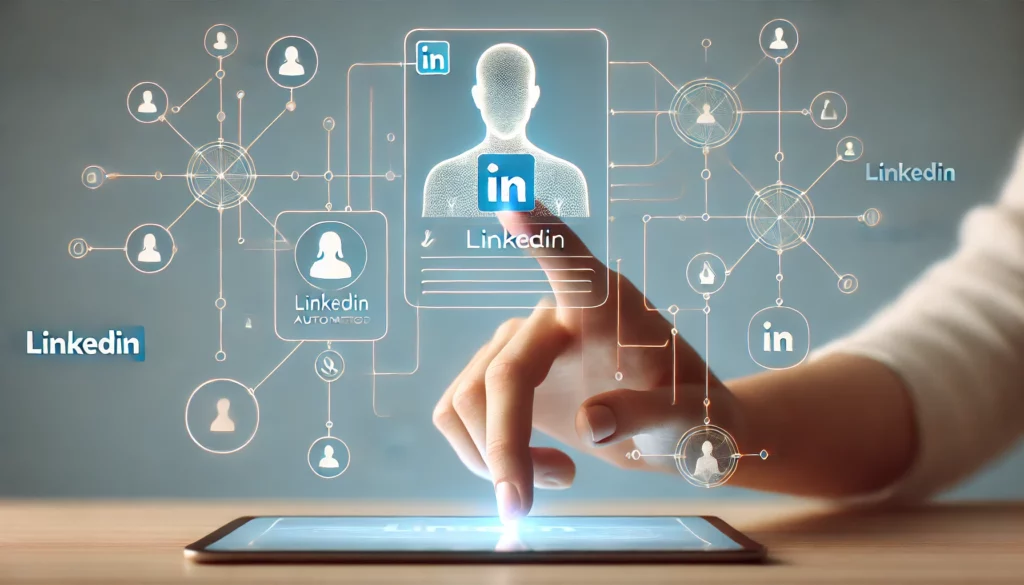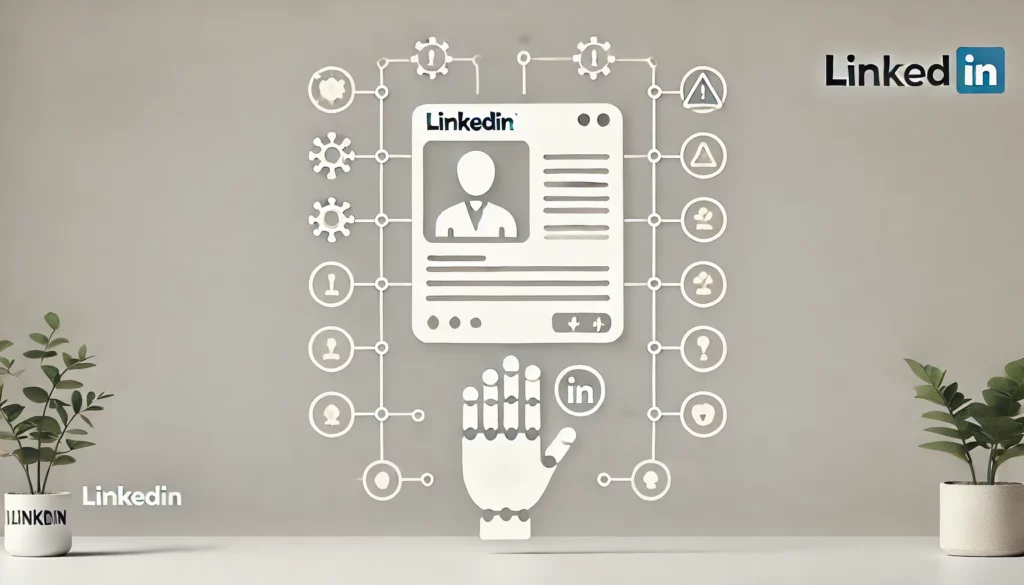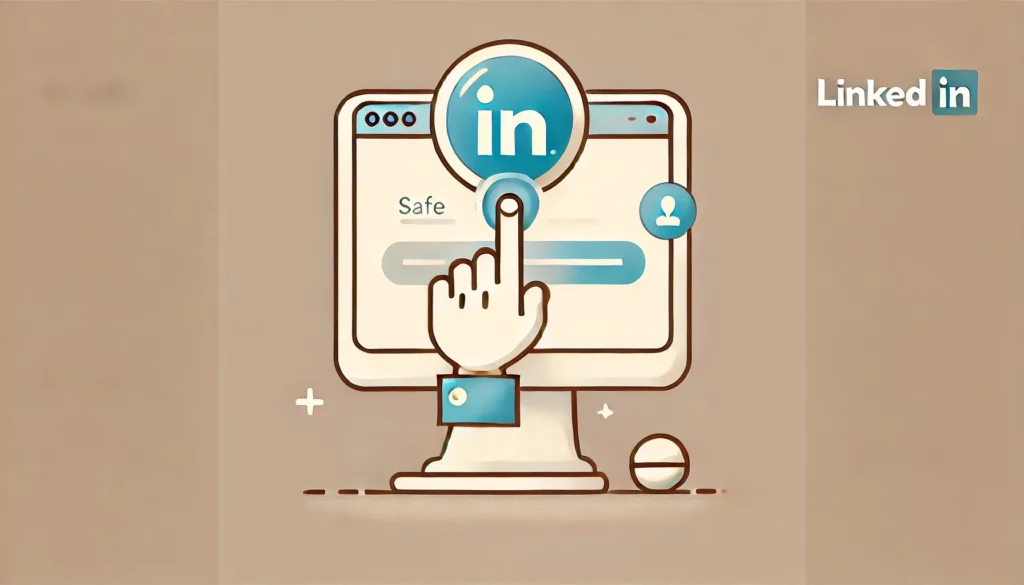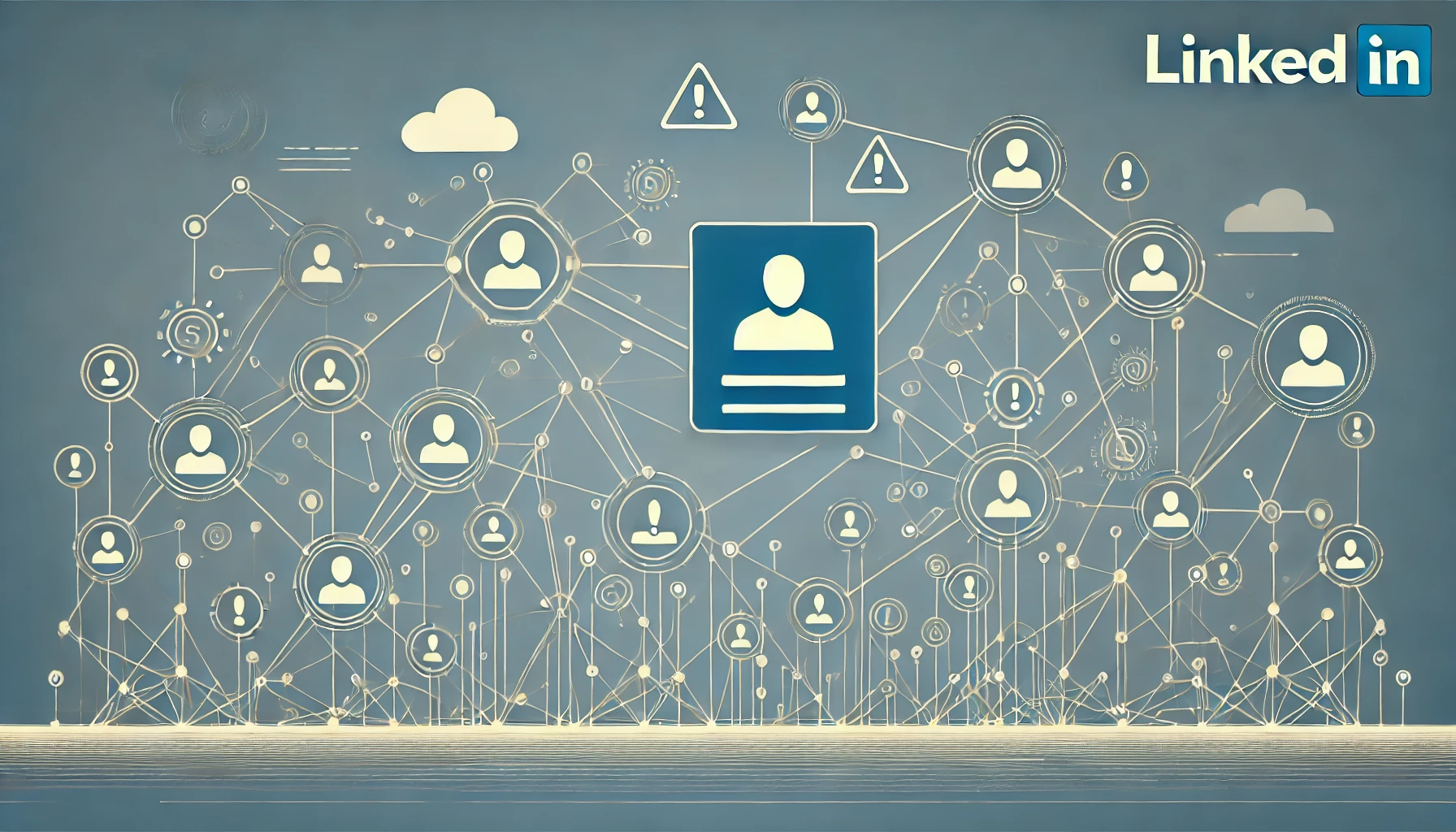LinkedIn has become a crucial platform for B2B professionals, but it keeps a close watch to preserve its reputation as a professional space. When businesses or individuals use automation tools for outreach, they often encounter warnings or restrictions. But what’s driving a LinkedIn automation warning? LinkedIn’s systems are designed to flag activities that seem unnatural or spam-like.

Starting with the Basics: What Triggers LinkedIn Automation Warnings?
One of the most common triggers for a LinkedIn automation warning is excessive profile views. If you’re viewing hundreds of profiles in a short time, LinkedIn may flag that behavior. Think about how a person typically browses—scrolling through profiles, taking breaks, and coming back at different times. Automation tools can speed through this process too quickly, raising red flags that a bot might be involved.
Another issue is sending too many connection requests in a short span, especially if they’re generic or not relevant. LinkedIn’s algorithms are tuned to pick up patterns, like a sudden increase in rejected requests or a very low acceptance rate. If you’re sending requests to hundreds of strangers every day, it can start to look like spam.
LinkedIn also keeps an eye on unusual login patterns, such as logging in from multiple locations or devices. This can be seen as a security risk and may lead to temporary restrictions. Additionally, using several automation tools or managing multiple accounts at once is almost guaranteed to get LinkedIn’s attention. The platform is built on authenticity, so anything that disrupts that will likely result in action.
At its core, LinkedIn’s mission is to maintain a space for genuine professional interactions. Automation itself isn’t the issue—it’s the misuse of it. If your actions resemble spam or automated behavior, LinkedIn will take steps to protect its community.

How to Use LinkedIn Automation Tools Safely
Automation can be a powerful way to expand your LinkedIn outreach, but it’s important to strike the right balance between efficient networking and spamming. Avoiding LinkedIn’s penalties requires careful attention to how you use automation. Here are some key tips to keep your account safe:
- Respect LinkedIn’s limits. While exact numbers aren’t disclosed, sending more than 100 connection requests per day is generally considered risky. Many experts recommend staying well below that, especially when you’re just getting started.
- Pace your activity with tools. Tools like Meet Alfred and LinkedCamp help manage daily activity by keeping you within safe limits. Randomizing actions—like spacing out connection requests or automated messages—can make your behavior appear more natural.
- Avoid excessive profile views. Rapidly scanning through hundreds of profiles will raise suspicions. Use tools that limit how many profiles you view per hour or day to mimic more natural browsing behavior.
- Choose cloud-based automation over browser extensions. Chrome extensions often modify LinkedIn’s HTML, which makes them easier for the platform to detect. Cloud-based solutions operate in the background, using consistent IP addresses that are less likely to trigger warnings.
- Personalize and customize your outreach. Automation should complement your human interactions, not replace them. Personalized messages and thoughtful connection requests reduce the risk of coming across as spammy.
In short, scaling your outreach with automation is possible if done cautiously. Focus on respecting LinkedIn’s boundaries, mimicking real user behavior, and prioritizing meaningful connections.
Choosing the Right Tool: What to Look for in LinkedIn Automation Software
Choosing the right LinkedIn automation tool can help keep your account safe and ensure successful outreach. Not all tools are the same, and picking the wrong one can lead to warnings, restrictions, or even a permanent ban.
One of the first things to consider is whether the tool operates on a cloud-based system or as a Chrome extension. Cloud-based tools are generally safer since they use consistent IP addresses and don’t interfere directly with LinkedIn’s code. On the other hand, browser-based extensions interact directly with LinkedIn’s interface, making them easier for the platform to detect and flag.
Another key feature to look for is whether the tool offers human-like customization. A good automation tool will allow you to randomize actions, such as adding delays between connection requests and messages, to make your activity appear more natural. This significantly reduces the risk of being flagged for suspicious behavior. A tool such as the Leadoku LinkedIn automation tool offers these features, ensuring safe automation with cloud-based architecture, mimicking human behavior, and preventing bans. Additionally, the tool should support personalization, enabling you to tailor your messages to individual recipients. Sending generic, automated messages not only weakens your outreach but also increases the chances of LinkedIn flagging your account for spam..
The Smart Way to Reach B2B Prospects
While LinkedIn automation can help you scale your outreach, it’s important to focus on quality over quantity. Sending mass, impersonal messages is one of the quickest ways to push potential connections away and hurt your professional reputation. Instead, take the time to craft personalized, thoughtful messages that are relevant to each recipient. Mention something specific about their profile or recent activity to show you’ve done your homework and genuinely understand who they are and what they do.
By sending fewer, but more personalized messages, you’ll increase your chances of getting a positive response. Plus, this approach keeps you within LinkedIn’s limits and helps you avoid raising red flags. Personalization does take more time, but it pays off by building real relationships and steering clear of the spammy behavior LinkedIn works hard to prevent.
What to Do If You Get a Warning
Getting a warning from LinkedIn isn’t the end of the world, but it’s definitely a signal that your activity needs adjustment. If you do receive one, the first thing to do is slow down. Pause sending connection requests and messages for a bit, then review your recent behavior to pinpoint what might have triggered the warning. It could be that you’ve gone over LinkedIn’s daily limits or that your actions seem too automated.
Next, tweak your automation tool settings. Most tools will allow you to scale back the number of actions per day, add longer delays between them, and increase the level of personalization in your outreach. These changes can help ensure that your future activity better aligns with LinkedIn’s guidelines. If you feel the warning was given in error, you can always reach out to LinkedIn support to appeal. Just be sure to demonstrate that you’ve made efforts to correct your behavior moving forward.

Banned or Restricted? How to Avoid Permanent Damage
To stay safe from LinkedIn automation tools warning while using LinkedIn automation, the best approach is to combine it with genuine, human engagement. Experts suggest using tools that offer randomization features, like varying the timing of your messages or connection requests. This helps make your activity look more natural. Also, make sure your automation schedule aligns with normal business hours to make your actions seem more like those of an actual LinkedIn user.
It’s also important to balance automation with manual interaction. LinkedIn is all about building relationships, and automating everything limits your ability to form real connections. Just like for any other job – use automation tools for repetitive tasks, like sending connection requests, but make sure to manually engage with prospects through comments, replies, and personal follow-ups.
Expert Tips: Steering Clear Of LinkedIn Automation Tool Warning While Automating B2B Outreach
The safest way to use LinkedIn automation is to combine it with authentic human engagement. Experts recommend using tools that offer randomization features to make your actions look more natural, such as varying the timing between messages or connection requests. Additionally, make sure your automation schedule aligns with normal business hours, as this helps your activity appear more like that of a genuine LinkedIn user.
Another important tip is to balance your automation with manual interaction. LinkedIn is a relationship-based platform, and automating everything will limit your ability to build real connections. Use automation to handle repetitive tasks like sending connection requests, but take the time to manually engage with prospects through comments, replies, and personal follow-ups.
Automation as a B2B Growth Strategy
LinkedIn automation can be a powerful tool for getting more leads for your business, but it must be used thoughtfully. Misusing automation—by sending spammy messages or using unsafe tools—will quickly lead to a LinkedIn automation warning, restrictions, or even a permanent ban. The key to successful automation is prioritizing personalization and relationship-building over simply increasing volume.
By choosing the right tools, staying within LinkedIn’s limits, and balancing automation with authentic interactions, you can leverage automation to grow your network and business—without putting your account at risk.

